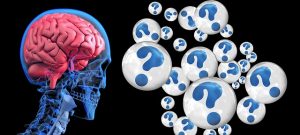New Research Is Telling Us More About the Possible Cause of Dementia
 Over the years, researchers have tried to determine the cause of dementia, including Alzheimer’s disease. Previously, researchers believed that amyloid was one of the proteins thought to cause the disease. With new discoveries about the mysteries of dementia, there is a new culprit in the debate about what may cause dementia.
Over the years, researchers have tried to determine the cause of dementia, including Alzheimer’s disease. Previously, researchers believed that amyloid was one of the proteins thought to cause the disease. With new discoveries about the mysteries of dementia, there is a new culprit in the debate about what may cause dementia.
Amyloid protein is thought to build up in the brain normally throughout life, but, at night, when we’re sleeping, particularly when we get into deep sleep, the protein gets cleared from the brain. Researchers are investigating the possible link between obstructive sleep apnea, and levels of certain proteins involved in Alzheimer’s disease. Obstructive sleep apnea (OSA) involves periods of disordered breathing, which occur when a person’s upper airway closes during sleep. Sleep problems including OSA have previously been linked to an increased risk of dementia. It is unclear whether sleep problems lead to an increased risk of Alzheimer’s, or if very early Alzheimer’s changes might cause disrupted sleep.
Amyloid forms into plaque in the brain, while tau is a protein that forms into tangles. These plaques and tangles are found in the brains of people with Alzheimer’s disease. Tangles destroy a vital cell transport system made of proteins. The transport system is organized in orderly parallel strands somewhat like railroad tracks. Food molecules, cell parts and other key materials travel along the tracks. Tau helps the tracks stay straight. In areas where tangles are forming, tau collapses into tangles and the tracks can no longer stay straight. They fall apart and disintegrate and nutrients and other essential supplies can no longer move through the cells, which eventually die.
A new study of 10 people with mild Alzheimer’s disease suggests that tau deposits—not amyloid—are closely linked to symptoms such as memory loss and dementia. Although this evidence won’t itself resolve the debate over which protein causes Alzheimer’s, the finding could spur more research into new treatments and diagnostic tools.
The best news in all of this? At present, the only way to affirm a diagnosis of Alzheimer’s and other diseases related to dementia, is a test performed after the patient dies. If the research shows that tau is the cause of dementia, the source can be detected with a PET scan, rather than waiting until the patient dies to positively diagnose.

















